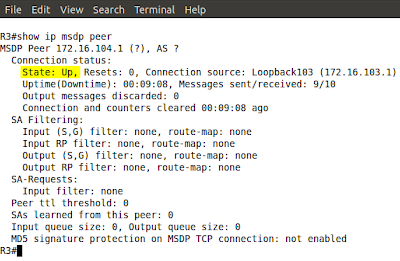Prerequisites: CCNP level skills.
Topology
Pic. 1 - Topology Diagram.
Note!
Routers and switches are already configured as per the topology diagram. IP Multicast routing is enabled on all devices.
Task 1
Configure a solution for Video Conferencing software using 225.5.5.5 group address. R1 should be the distribution point of this single shared tree.Routers and switches are already configured as per the topology diagram. IP Multicast routing is enabled on all devices.
Task 1
Solution
Task 1
Configure a solution for Video Conferencing software using 225.5.5.5 group address. R1 should be the distribution point of this single shared tree.
R1 Configuration:
!
ip pim bidir-enable
!
ip access-list standard MULTICAST_225.5.5.5
permit 225.5.5.5
!
permit 225.5.5.5
!
ip pim rp-candidate Loopback101 group-list MULTICAST_225.5.5.5 bidir
!
ip pim bsr-candidate Loopback101 0
!
All Other Devices Configuration:
!
ip pim bidir-enable
!
Verification:
IGMP join-group on S1, S2, R6. Ping from R1 to 225.5.5.5 is getting response. Example of mroute table on R5 for the group:
Pic. 2 - Mroute Table on R5.
DF Election
On every network segment and point-to-point link, all PIM routers participate in a procedure called DF election. The procedure selects one router as the DF for every RP of bidirectional groups. This router is responsible for forwarding multicast packets received on that network upstream to the RP.
The DF election is based on unicast routing metrics and uses the same tie-break rules employed by PIM assert processes. The router with the most preferred unicast routing metric to the RP becomes the DF. Use of this method ensures that only one copy of every packet will be sent to the RP, even if there are parallel equal cost paths to the RP.
A DF is selected for every RP of bidirectional groups. As a result, multiple routers may be elected as DF on any network segment, one for each RP. In addition, any particular router may be elected as DF on more than one interface.
source:
http://www.cisco.com/en/US/docs/ios/12_2/ip/configuration/guide/1cfbipim.html





























